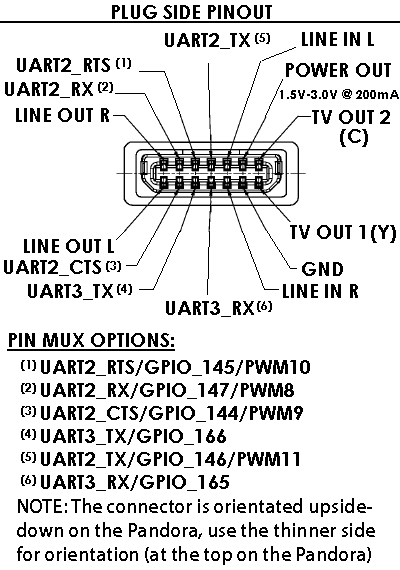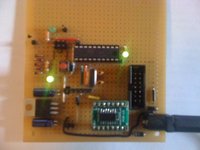MarkoeZ
arr matey?
Hello People,
This will be a (video) blog about my experiments with the TI MSP430 Launchpad. A week ago i heard about this for the first time. It's a very very cheap microcontroller testboard/breakoutboard, only $4.30. Check This thread on these forums for more info.
The plan is to strip an rc-car, use one or more msp's to control the motor drives, one or more for the sensors, and one to drive the I2C clock of them all and collect and send away instructions.
Now what does this have to do with the Pandora, you might ask. Legitimate question, since the video's i'm posting at first do not even mention the pandora.
Well, the robot will have functions for collision detection and other critical stuff, but since the MSP can do serial connection (as you can see in video 6, controlling the leds of the pad through a virtual com port), and i am expecting WizardStans Pandora ext connectors any day now, the plan is to hook it up to the Pandora, and use that as a central brain. Collecting data and deciding where to go and what to do. And ofcourse a manual override would be available to control it with the pandora's digital buttons, or even the nubs eventually.
At first through the ext connector as mentioned, but later on i want to add a bluetooth module for a wireless conection.
So much for the talk, first testing video's below.
Enjoy!
https://www.youtube.com/embed/odFcJYDk5t0?feature=oembed
http://www.youtube.com/watch?v=XQHsioX6w4A
http://www.youtube.com/watch?v=VZA3SDDxmqA
http://www.youtube.com/watch?v=y-EwhE_hcFI
http://www.youtube.com/watch?v=-gfVuVWUvOU
http://www.youtube.com/watch?v=nYRAa2rz8-U
http://www.youtube.com/watch?v=-txj7uOmaQU
http://www.youtube.com/watch?v=7NydlZmNoTM
http://www.youtube.com/watch?v=egP4_DAfu1o
http://www.youtube.com/watch?v=2MJxunvT5NY
http://www.youtube.com/watch?v=F7yaBuB18sk
p.s. feel free to ask questions and discuss ofcourse
This will be a (video) blog about my experiments with the TI MSP430 Launchpad. A week ago i heard about this for the first time. It's a very very cheap microcontroller testboard/breakoutboard, only $4.30. Check This thread on these forums for more info.
The plan is to strip an rc-car, use one or more msp's to control the motor drives, one or more for the sensors, and one to drive the I2C clock of them all and collect and send away instructions.
Now what does this have to do with the Pandora, you might ask. Legitimate question, since the video's i'm posting at first do not even mention the pandora.
Well, the robot will have functions for collision detection and other critical stuff, but since the MSP can do serial connection (as you can see in video 6, controlling the leds of the pad through a virtual com port), and i am expecting WizardStans Pandora ext connectors any day now, the plan is to hook it up to the Pandora, and use that as a central brain. Collecting data and deciding where to go and what to do. And ofcourse a manual override would be available to control it with the pandora's digital buttons, or even the nubs eventually.
At first through the ext connector as mentioned, but later on i want to add a bluetooth module for a wireless conection.
So much for the talk, first testing video's below.
Enjoy!
https://www.youtube.com/embed/odFcJYDk5t0?feature=oembed
http://www.youtube.com/watch?v=XQHsioX6w4A
http://www.youtube.com/watch?v=VZA3SDDxmqA
http://www.youtube.com/watch?v=y-EwhE_hcFI
http://www.youtube.com/watch?v=-gfVuVWUvOU
http://www.youtube.com/watch?v=nYRAa2rz8-U
http://www.youtube.com/watch?v=-txj7uOmaQU
http://www.youtube.com/watch?v=7NydlZmNoTM
http://www.youtube.com/watch?v=egP4_DAfu1o
http://www.youtube.com/watch?v=2MJxunvT5NY
http://www.youtube.com/watch?v=F7yaBuB18sk
p.s. feel free to ask questions and discuss ofcourse
Last edited by a moderator:



